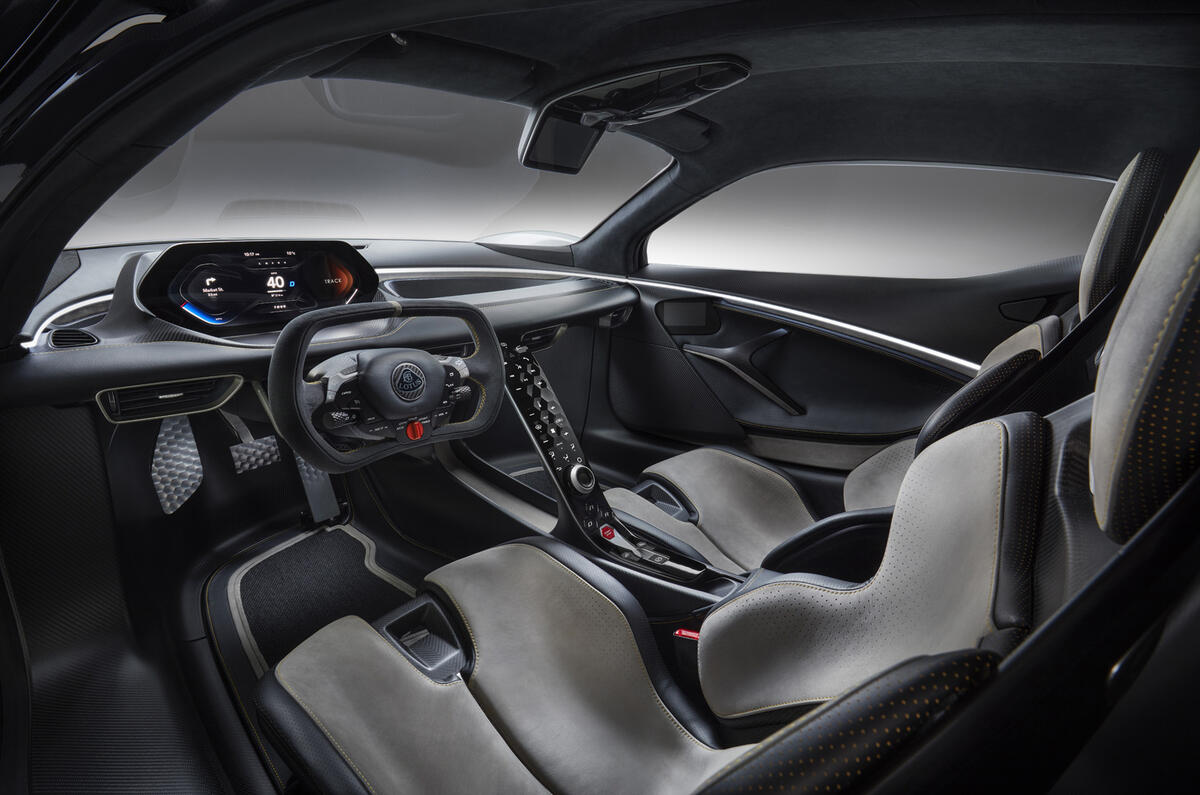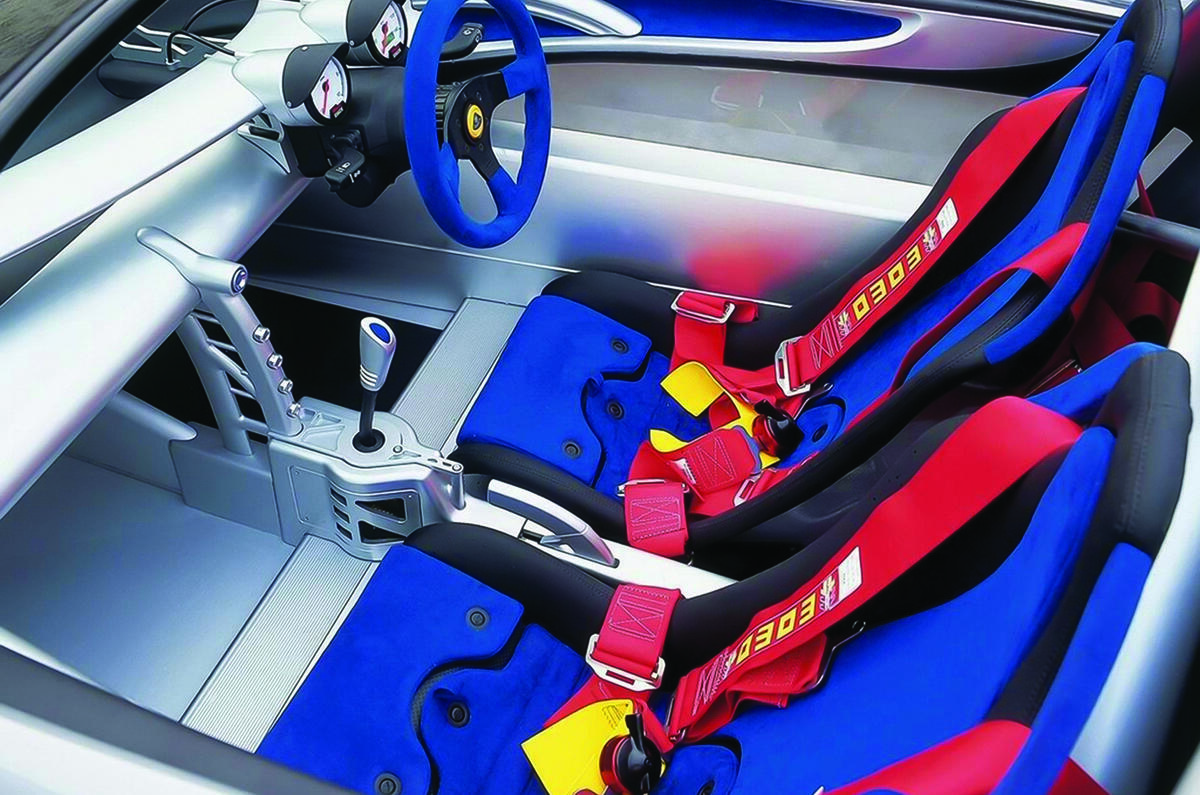Looking through the Autocar archive in aid of a recent Lotus Elise feature, I read information about and tests of the 340R, the limited-run, extra-light, Elise-based roadster that Hethel made in 2000.
It was warmly received by us, but we were mildly involved in its development, so it kind of had to be, even though we conceded it was "a very expensive exercise in minimalism".
I'm not sure it was more broadly loved (like, say, the conceptually simpler 2-Eleven of 2007), but I do think it was probably ahead of its time. Rare, trinket-like special editions of sports cars and supercars have become a staple way of keeping cash coming in for some niche makers.
Anyway, that's not what I want to talk about this time. What caught my eye was the Lotus 340R's interior, with its bare spar stretched like a bridge across its width, with the instruments attached to it and a conjoining vertical central pillar featuring key functional buttons.
It reminded me of something, but what? I pulled up pictures of Lotus's new electric hypercar, the Evija. Fast forward 20 years and there's a conceptually similar horizontal spar and a vertical pillar hosting functions.
It's a slightly more complicated interior today, no doubt, but today's production cars are more complicated than an Elise-based lightweight special. Plus it has to have air vents.
And there's another link. Lotus "prepared five designs" for the 340R, we were told back in the day, and "the decision was taken to go with the Russell Carr proposal".
The Evija's designer? None other than the very sane Mr Carr. There are huge differences between these cars and Lotus is a very different company than it was 20 years ago, but I was quite taken with the link.
How feasible is mega-miling a car?
Do you know of an incredibly high-mileage motor? As referenced in the Elise feature, I've come across a 290,000-mile Series 1 example that's daily-driven. I'd like to know more about it, but I'd also like to find other mega-milers to tell their stories; to know what makes a car ripe for accumulating moonshot mileages.
Is going far the preserve of only interesting and strongly valued cars, or can we find some genuinely uninteresting metal that would be ripe for the Festival of the Unexceptional yet is still doing the rounds on the daily commute decades and five-figure distances after their brethren have met the scrapper?
Are some construction types more able to withstand higher mileages than others? And do some car makers think differently to others? It seems that Lotus engineers didn't build much obsolescence into the Elise, given that its aluminium chassis won't corrode, it apparently won't wilt and most things that are bolted to it are also aluminium or composite. Beyond those are just consumables, making the car straightforward to maintain.
When manufacturers talk about rating components for the life of a car now, they tend to talk about 200,000 kilometres or 120,000 miles, which is about commensurate with the average age for cars being scrapped/recycled in the UK, which happens at around 15 years.
But I'm a fan of buying well and keeping forever, or for as long as is feasible. Which is why I'd like to hear from people who think the same way. How many cars with half a million miles, or indeed more, are out there?
I'm looking to put together a feature of celebration and - who knows? - maybe that could include some advice, too. So if you know a motor that would like to feature, drop me a note via one of the channels below.









Join the debate
Add your comment
120k miles should be nothing for a modern vehicle, although from some of the horror stories you read we may be moving backwards. I've run two gen 1 Audi 90s to well past 200k miles and my ex did the same with a gen 2 90. The headlamp reflectors went on my first one and it was cheaper to buy another one that had already had them done than to buy the parts! Little wrong with any of them at those kinds of mileage, just the price of Audi specific parts making it difficult to justify keeping them running.
One of my current cars is a gen 1 Honda Insight. Although mine only has about 70k on it there are many that have gone well past 300k miles (including the one owned by Jonny Smith) and several documented over 500k (I think the record is now around 1,000,000 for one in the US). Not bad for a car with such a small engine, but apart from low weight the IMA hybrid system probably saves that engine from a lot of normal wear and tear.
One of the reasons i am very suspicious of EVs is their longevity. where is the evidence they will last? The oldest ones are Leafs, and they havent done well despite being only just over a decade old.
I have a 1999 Peugeot 406, i bought at 6 months old with 1,500 miles on it. Its now got 163,000 on it, and it is in semi retirement, but i would still get in it and happily drive it 400 miles. Its hardly needed anything to keep it going either. Do we really think EVs will last 25 years and still be a viable daily driver? I know 163,000 isnt mega mileage, simply because I dont drive far enough, but i see no reason, beyond parts supply to keep ICE cars going almost indefinitely. And whats more the cars made just before and just after the milenium were peak car. Limited electronics, good performance, good anti rust protection, and usually a decent powertrain too. And i like driving it, which is the most important thing, so if it was all I could drive for the years to come, that would be fine, but i would rather preserve it, and so it will never be Mega mileage
Examining the four frameworks of advantages and disadvantages of living in a study boarding house 2023.11.18/* Anyway, living experience with the advantages and disadvantages of a boarding house depends on various factors including location, facilities, and environmental conditions. It is suggested that you carefully check the conditions and features of each guesthouse before staying in order to make a better decision to live there. A study boarding house or a student residence is a common living environment that is provided for students. These residencies are usually run by universities or organizations related to education and research. Living in a student boarding house can be an interesting experience and have many benefits. Below are some features and experiences related to living in a study boarding house: Housing cost: One of the main advantages of living in a study boarding house is the cheaper housing cost compared to living outside the study boarding house in Isfahan Dr. Azin Gazer drazingazor. This is attractive to students looking for economical options. Becoming more social: living in a student boarding house provides a lot of opportunity to establish social relations and friendship with other students.